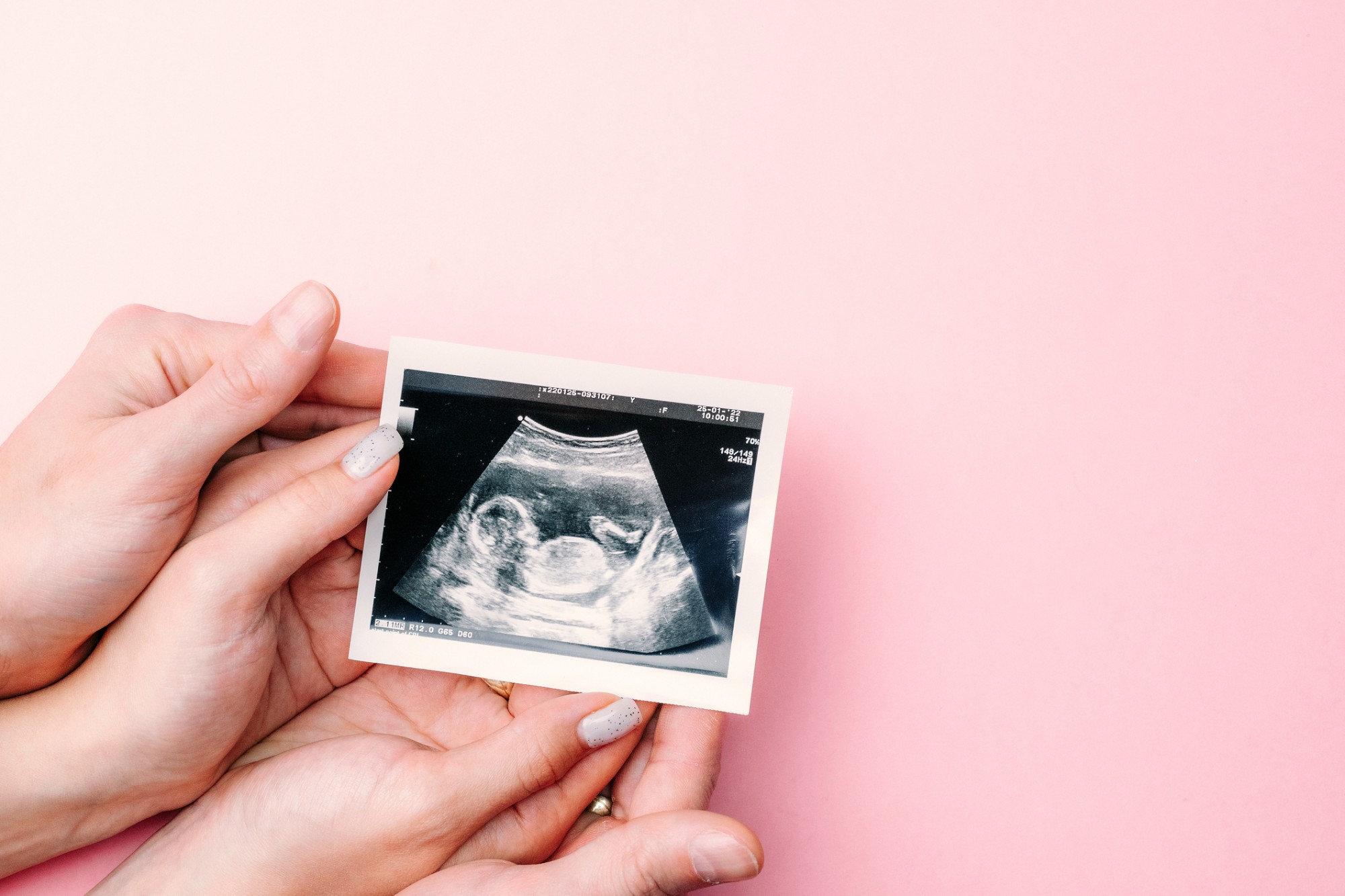When a woman has an unplanned pregnancy, she faces many challenges, especially if she is not in a good relationship. The world’s wisdom says abortion is the best way to make the “problem” go away. But does it?
Proverbs 14:12 (NKJV) says, “There is a way that seems right to a man, but its end is the way of death.”
Abortion is hotly debated, fiercely defended, passionately contested, and permanently polarizing. It affects every member of society, mothers, fathers, preborn babies, and extended family members now and for generations.
Life and the Image of God
Abortion is more than an issue of tissue. It is life and death; life made in the image of God.
Each one of us carries God’s breath before we are born; before we are conceived. Let us pause on that for a moment.
When we believe God breathed His breath of life into Adam, and God also created woman from Adam’s rib, that means she carried that same breath of God. When she and Adam procreated, God did not breathe again into their children. They were born with the same breath given to their father, Adam.
The breath of God continues to be inside every single baby conceived before they are born.
A Marvelous Creation
Psalm 139:14 &16 (NKJV) says, “I am fearfully and wonderfully made; Marvelous are Your works, And that my soul knows very well. Your eyes saw my substance, being yet unformed.”
God knows us when we are made in secret, a tiny embryo and early fetus. God plans our days before we are conceived. We are mind, body, and soul.
This is what distinguishes us from animals and why PreBorn! exists to save more babies and souls. We believe abortion hurts. It is from this lens that PreBorn! takes a compassionate and comprehensive look inside the process of abortion.
Examining Abortion: A Comprehensive Look
Pro-Choice advocates say the abortion procedure only hurts for a little while and is mild compared to childbirth.
Until a few years ago, researchers believed fetuses do not feel pain before 24 weeks gestation. Yet the British Medical Journal reports now, based on current research using functional Magnetic Resonance Imaging (fMRI), that neonatal neuroscientists question this today.
About 93% of reported abortions in 2019 were performed at or before 13 weeks of pregnancy.
Understanding the development of the baby in these early weeks helps inform us of the possible pain and long-term side effects of abortion for both mother and pain for child/fetus before its development has ended.
The Profound Transformation of a Baby
The following information on human development in the first and second trimesters barely scratches the surface of the complexities of God’s design for human development, but it is impactful and a necessary foundation on which to build.
Embryonic State “A critical period of the baby’s development
Healthcare providers usually set the due date 40 weeks (about 9 months) from the first day of the mother’s last period (MLP), not from the first day of conception or fertilization. Ovulation usually occurs during or right after the first two weeks of the 40 weeks set for the due date.
Third week of pregnancy (First seven days after conception)
- A one-celled zygote forms when a sperm fertilizes an egg. It contains 46 chromosomes, 23 from the biological mother and 23 from the father.
- Mitosis, or rapid cell division takes place during this time.
- The zygote moves from the fallopian tube to the uterus and transforms into a blastocyst.
- Implantation occurs and cells on the outer layer of the blastocyst attach to the outer layer of the mother’s endometrium in her uterus, usually the upper section.
- They bind to the uterus by forming a chemical bond with substances in the endometrium.
- These outer cells eventually become the fetus.
- Cells in the inner layer of the blastocyst implant to insert or engraft, more deeply in the endometrium.
- This is the baby’s lifeline for the next nine months.
- These cells become the placenta, which carries oxygen and nutrients to the developing fetus.
- Some placental cells also form the amniotic sac that contains a clear, protective fluid around the fetus.
Fourth week of pregnancy (Days 8-14 after conception)
- The embryo cell layers start to become distinct and form organs, the nervous system, and blood cells.
- Gastrulation occurs toward the end of this week. The gastrula has three layers “the ectoderm, the mesoderm, and the endoderm “all the parts of the human body.
Fifth and Sixth weeks of pregnancy (Days 15-28 after conception)
- The ectoderm “the outer layer of the gastrula will become the skin, central and peripheral nervous system, some cranial bones, mouth between the cheek and gums, tooth enamel, cornea and lens of the eye, inner ears, pituitary and adrenal medulla, and the anus.
- The mesoderm “this middle layer is the early part of the notochord, skeletal system, muscular layer of stomach and intestine, excretory system, circulatory and lymphatic systems, reproductive system (except germ cells), skin dermis, the lining of the body cavity, adrenal cortex.
- The endoderm “the epithelial lining of the digestive tract and respiratory system, lining of the urethra, urinary bladder, reproductive system, liver, pancreas, thymus, thyroid, and parathyroid glands.
- Neurulation begins “the neural tube along the baby’s back begins closing.
- This tube is the beginning of the spinal cord.
- There is a bump at the end of it which is the beginning part of the brain.
Seventh week of pregnancy (Days 29-35 after conception)
- The baby begins to form a C-shape.
- Grooves for the face and neck develop.
- Nostrils, retinas, inner ears, and arm buds begin to form.
- Liver, pancreas, spleen, and gallbladder start to develop.
Eighth week of pregnancy (Days 36-42 after conception)
- The eyes and nose begin developing.
- The trunk and neck start to straighten.
- The hand buds form flat paddles at the end of the arms.
- Leg buds begin to form.
- Early-stage kidneys begin to form.
- The stomach starts to develop.
Ninth week of pregnancy (Days 43-49 after conception)
- Lungs begin to form.
- Arms and legs get longer, and fingers and toes form.
- The baby’s sex organs begin to develop.
- The lymphatic system starts to form.
Tenth week of pregnancy (Days 50-56 after conception)
- The final week of the embryonic stage.
- Baby’s head is rounder.
- Eyelids and external ears continue to develop.
- The umbilical cord is visible.
- The baby’s face looks human.
- Ultrasound can pick up the heartbeat and arm movement.
- Elbows can now bend.
- All essential organs have begun to form.
Fetal Stage of Development
The fetal stage is the final and longest stage of prenatal development. It’s a fascinating time because this is when the majority of the body’s systems, structures, and functions begin to develop in detail.
Week 11 of pregnancy (Days 57-63 after conception)
- The baby is officially called a fetus.
- The face has eyes wide apart, and eyelids are fused.
- Buds for teeth begin to appear.
- Red blood cells begin to form in the liver.
- External genitalia begin to develop.
Second Trimester “Weeks 12-24 of pregnancy (Weeks 10-22 after conception)
- Fingers and toes are distinct.
- Placenta is complete.
- Fetal circulation is developed.
- Organ systems are formed.
- Sex is determined.
- Kidneys secrete urine.
- Heartbeat is heard on ultrasounds.
- Nasal septum and palate are closed.
- Mom feels the baby’s movement.
- Skin looks wrinkled.
- Fingernails develop.
Abortion Hurts
Abortion is defined as “the termination of a pregnancy after, accompanied by, resulting in, or closely followed by the death of the embryo or fetus.” It is profound the number of abortions there are in the U.S. every year.
The Guttmacher Institute statistic show there were almost one million abortions in the U.S. in 2020. This means 2,548 babies died daily in the U.S. that year.
Of those abortions, around 54% of them are chemical abortions. This means that more women take the abortion pill instead of having a medical abortion in an abortion clinic.
Abortion hurts the mother and child physically and emotionally.
Are abortions safer than childbirth? It depends on who you ask. According to the National Right to Life Center (NRLC), “there is no agreement among investigators as to what constitutes a major complication and no real national system for reporting these kinds of statistics making the accuracy of such assertions questionable.”
According to Physicians for Life, “there are no accurate scientific studies of the safety of abortions” in abortion clinics.
Medication/Medical Abortion
What is the process of a chemical abortion?
The abortion pill is a two-stage medicinal process employed to end an ongoing pregnancy. The initial medication, known as mifepristone, is used in synergy with a subsequent pill called misoprostol. The FDA has sanctioned the use of this abortion method for the initial 70 days or the first 10 weeks of pregnancy.
How the abortion pill works
First, a woman takes mifepristone, a medication that inhibits progesterone, a hormone crucial to sustaining pregnancy. Without progesterone, the uterine lining cannot continue supporting the pregnancy, causing it to end.
However, it’s important to note that if a woman changes her mind after this stage, she might be able to reverse the process. This involves receiving doses of progesterone to counteract the effects of mifepristone, potentially preserving the pregnancy.
Next, within 24 to 48 hours of taking mifepristone, a woman then takes misoprostol. This pharmaceutical makes the uterus to contract and expel the pregnancy. This process can be likened to a miscarriage and may involve significant bleeding.
After the remains of the baby have been expelled, many times in a bathroom, the woman is responsible for taking care of the remains. These can include tissue fragments or remnants of the pregnancy sac.
If the medication doesn’t fully complete the abortion process, the woman may need to consider additional medical intervention. This could include a surgical abortion or an emergency procedure known as dilation and curettage (D&C) to remove any residual tissue.
What are the physical and emotional side effects of medication abortion?
Twenty-four mothers died between 2000 to 2018, and around 4,000 mothers expressed experiencing adverse reactions associated with the use of the pill. These complications ranged from severe abdominal discomfort, and major bleeding incidents, to critical infections that could potentially be life-threatening.
Side effects depend on factors such as how far along the pregnancy is and the mother’s health. Some women can resume work in two days while others have symptoms for weeks. The most severe side effects start soon after taking the second pill.
Physical side effects
- Nausea
- Weakness
- Fever/chills
- Vomiting
- Headache
- Diarrhea
- Dizziness
- Painful bleeding and cramping within one to four hours after taking the second pill.
- Heavy bleeding with gushes of clots.
Severe physical side effects
- Very heavy and/or prolonged bleeding that can last for several weeks.
- Incomplete abortions.
- Infections
- Death is rare, but it does happen.
Emotional side effects
A significant risk, although not often discussed, is the emotional trauma a woman may experience when she has to navigate through the self-inflicted abortion process on her own, with minimal or no support or post-procedure care.
Conclusion
Starting from conception, God has intricately designed each of us. You are valuable, human life is valuable, even when that human is not yet born.
The step-by-step intricate details of each stage a baby undergoes in utero is remarkable and truly the handiwork of God.
Abortion not only takes a life, but also causes harm to the mother, such as emotional harm and sometimes significant physical pain. Abortion removes the life of someone who could have made a difference on this earth but was never given the opportunity.
PreBorn! Continues fighting or the most vulnerable among us, the preborn baby, and helps to connect pregnant women with the resources they need so they choose life.











